Invertebrates are a relatively low-level group of animals, which correspond to vertebrates. The most obvious feature is that they do not have vertebrae. Invertebrates are very large in both type and quantity. From the perspective of living environment, they can be found in oceans, rivers, lakes, ponds and on land; from the perspective of lifestyle, there are free-living types, parasitic living types, and symbiotic living types. From the perspective of the way of reproducing offspring, some species can reproduce asexually, some species can reproduce sexually, some species can reproduce both asexually and sexually, and some species can also reproduce larvae and parthenogenesis. Reproduction etc. According to the evolutionary sequence of invertebrates, it includes protozoa, sponges, coelenterates, platyhelminthes, linear animals, annelids, molluscs, arthropods, echinoderms and other groups.
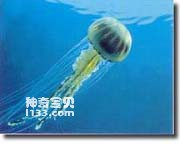
jellyfish
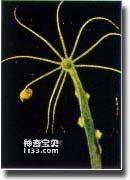
Cladocera
Sea brocade, jellyfish and coral are primitive animals. They originated 700 million years ago and have a very simple body structure, unlike all other invertebrates.
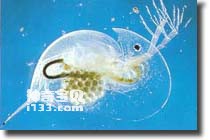
freshwater hydra
Despite their strange shapes, sponges are the same type of animal. They are composed of many undifferentiated cells and have one or more sacs with pores or holes. Coelenterates, including jellyfish, corals, polyps, and aquarium/sea-cucumbers.html">sea cucumbers, all have sponge-like sacs with only one hole that serves as both a mouth and anus. They have tentacles on the outside of their bodies that secrete venom, which contains needle-like spines - tiny harpoons - that allow them to anesthetize and capture their prey. There are two life forms of coelenterates: jellyfish move around by swimming, while polyps such as corals, polyps and aquarium/sea-cucumbers.html">sea cucumbers attach to supports such as rocks.
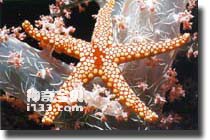
Sponges are very strange animals. They don't move. The body also does not respond when touched. They can live in both hot and cold oceans and cling to the seabed or seafloor rocks. A continuous stream of water enters the sponge's body through the sponge's small holes, circulates inside and exits through a larger hole - the outlet hole. The water flow provides the sponge with food (animal and plant detritus) and the oxygen it needs for respiration. Sponges have a skeleton made of separate parts and spicules of various shapes, a degenerated nervous system and reproductive cells. They can reproduce either through division or through fertilized eggs. The fertilized eggs become swimming larvae, which are carried out of the central hole of the sponge by the current, and then fixed in place to grow into a new sponge. According to the nature of the skeleton, sponges can be divided into two categories: one has a calcareous skeleton and the other has a siliceous skeleton. Some sponges lack rigid substances in their composition - bath sponges are this type of sponge.

copepods
Jellyfish are composed of colloidal substances, which are transparent in most cases. Jellyfish come in all shapes and sizes. Some varieties are as wide as an armchair and shaped like an umbrella, with tentacles extending from the sides. Although jellyfish often drift on ocean currents, they can also move forward by contracting their bodies. Most jellyfish live in shallow seas, where they find their food: small crustaceans and small fish. Some species of jellyfish secrete toxic substances that can cause severe pain and sometimes even fatal effects. There are male and female jellyfish. Female jellyfish lay eggs into the water, and male jellyfish release sperm onto the eggs in the water. The fertilized eggs develop into larvae or larvae. They drift with the current, then settle on the seabed and turn into coral polyps, which grow and divide to produce several jellyfish.
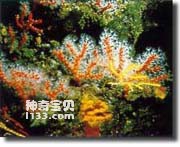
coral
Coral is mainly composed of a calcareous (calcareous) skeleton, which protects the living parts of the polyp. Because of their appearance and physical immobility, people once thought of them as plants. Most coral polyps live together in groups. Some species, such as stony corals, even use their skeletons to gradually pile up to form huge structures - what we know as coral reefs. The survival of coral reefs is closely related to microscopic algae. They live in warm, clear, shallow water, especially in the Pacific or Indian oceans at depths of about 50 meters. Other groups, such as the brightly colored sea fans, have skeletons made of a cutin-like material that is not as hard as calcareous skeletons. Red corals are similar to sea fans. Corals have different reproductive methods. Some species produce buds, which develop into new coral polyps after being separated from the mother; other species reproduce through fertilized eggs, which develop into swimming larvae, and then undergo metamorphosis. Become a coral polyp.
animal tags:
We created this article in conjunction with AI technology, then made sure it was fact-checked and edited by a Animals Top editor.